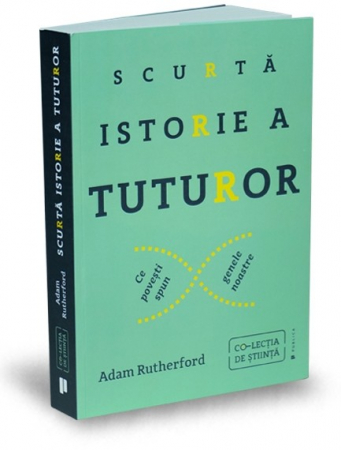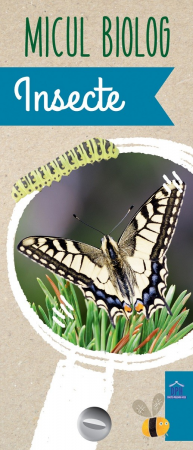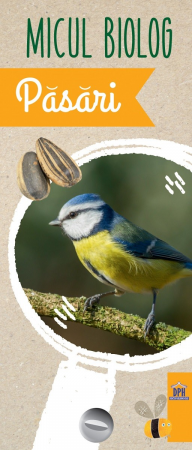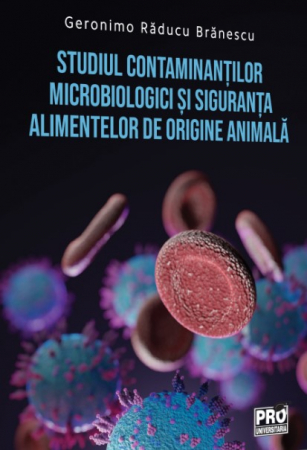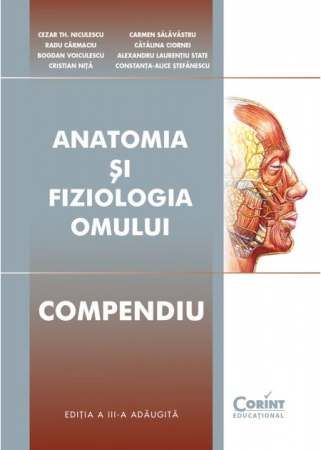Propuneri manuscrise: [email protected]: 0745 204 115
Urmărire comenzi Persoane fizice / Vânzări: 0745 200 357 / Comenzi Persoane juridice: 0721 722 783
6359.png) The Palaeontology of the cave bear bone assemblage from Ursilor Cave of Chisau – Osteometry, Palaeoichnology, Taphonomy, and Stable Isotopes - Marius Robu
The Palaeontology of the cave bear bone assemblage from Ursilor Cave of Chisau – Osteometry, Palaeoichnology, Taphonomy, and Stable Isotopes - Marius Robu
6359.png)
ISBN: 978-606-28-0400-8
DOI: 10.5682/9786062804008
Anul publicării: 2016
Ediția: I
Pagini: 248
Editura: Editura Universitară
Autor: Marius Robu
- Descriere
- Download (1)
- Cuprins
- Autori
- Review-uri (0)
The book you’re holding represents the published version of the Ph.D. thesis of Dr. Marius Robu, appointed researcher at the Department of Karst and Cave Protection, in the “Emil Racoviţă” Institute of Speleology of the Romanian Academy of Sciences. He has defended his thesis – entitled “The Palaeontology of the MIS 3 cave bear bone assemblage from the Urşilor Cave of Chişcău – Osteometry, Palaeoichnology, Taphonomy, and Stable Isotopes” in April 2015, and I was honoured by the invite to be member in his Examination Committee. This event represented an unexpected chance to meet again my younger colleague, and to learn about his accomplishments as a researcher, long after I first met him – and I would like to recall before anything else that encounter since, I feel, it is highly relevant when it comes to truly comprehend the nature of his achievements synthesized in this book.
A little more than 10 years ago, Marius was a student at the Faculty of Geography of the University of Bucharest, and as such, he followed a short introductory course on Geology. It was then – in 2004 – that he applied to be considered as participant to our yearly summer fieldwork in the Haţeg Basin, where we were looking for and excavating something rather ‘exotic’ – dinosaur and other vertebrate fossils from the end of the Mesozoic Era.
This was indeed a rather unexpected application, as we were usually forming our team out of Geology undergraduates, but Marius was included into the team regardless and he helped us that summer to search for dinosaur remains. Our next encounter was even more surprising and unanticipated: after finishing his undergraduate studies in 2007 and being freshly employed at the “Emil Racoviţă” Institute of Speleology, he walked into my office and asked me for assistance in the form of basic information and useful references about ‘taphonomy’ – a term and a field of scientific enquiry even most Geology undergrads are not usually accustomed with.
We discussed shortly, and I lent him some references, then we parted, leaving me with only a vague impression that, maybe, something important was developing there. Nevertheless, it is now clear for me, after reading through, and seeing the defence of, his Ph.D. thesis, that the path of Marius as a successful researcher was already laid down at that point, and his book now stands evidence in this respect.
As starting-carrier researcher, Marius took up the idea of studying the life and death of the well-known cave bear – Ursus spelaeus -, the iconic large predator of the late Ice Ages whose remains are now found scattered throughout the caves of Romania. As main focus of his studies, he choose the notorious ‘Peştera Urşilor’ (‘Bears Cave’), an important cave system of the Apuseni Mountains in western Romania that contains an impressive number of well-preserved cave bear remains. The novelty of his line of attack was that he approached his research topic in an innovative, multidisciplinary way, employing and synthesizing data derived from paleontology, morphometry, taphonomy, paleoichnology and stable isotopes, combined with sedimentology and radiometric dating, in order to address questions concerning the mode of life of Ursus spelaeus, its conditions of death, and conditions of accumulation of its fossilized remains in the spelaean sediments of the Urşilor Cave.
The story this book tells, stemming from Marius’s research, is an intriguing detective story aimed to understand how and when these prehistoric creatures lived, how they interacted with their environment and with each other, and, finally, how the circumstances of their demise can be gleaned from the way their fossils are preserved in the cave sediments. It is a sound, logical and coherent science detective story, the only way scientists (first of all, geologists) can understand the past, can decipher the otherwise inscrutable ebbs and flows of Life and Earth through the ages. And to conclude, maybe it is also significant that this story is told, with a mix of elegancy and rigorous scientific consistency, by a Geography bachelor who wrote a Geology-themed thesis to receive a Ph.D. degree in Biology. This is a clear testimony that delving into the Deep Past of the Earth and understanding it had truly become possible only through interdisciplinary approaches. It is also a testimony that Marius has succeeded in his self-appointed quest to conduct such an interdisciplinary research; hence, the birth of this book, and of the plethora of scientific papers that will surely succeed it. Enjoy reading it!
december 2015 Dr. Zoltán Csiki-Sava
Associated Professor,
Department of Geology
Faculty of Geology and
Geophysics
University of Bucharest
-
The Palaeontology of the cave bear bone assemblage from Urşilor Cave of Chişcău – Osteometry, Palaeoichnology, Taphonomy, and Stable Isotopes
Descarcă
Preface /5
Acknowledgements /7
Abbreviations /9
Contents /11
Introduction/ 14
Cave bear research in Romania – A comprehensive view /21
1. Introduction/ 21
2. Geographical distribution of Ursus spelaeus localities in Romania/ 22
3. The main research trends in the studies on cave bears from Romania/ 25
a. Phylogeny /25
b. Taphonomy and palaeobiology /25
c. Palaeoichnology/ 26
d. Morpho-osteometry/27
e. Age Dating /28
i. Chronostratigraphy/28
ii. Absolute dating /29
f. Extinction and paleodiet /29
i. Extinction/ 29
ii. Paleodiet /30
Materials and methods/31
1. Description of Urşilor Cave and its Contents/ 31
a. Description of the subterranean network /31
b. Sediments/ 34
i. Excavation Chamber /34
ii. Subterranean terraces section/ 37
iii. Additional samples (the Upper Passage)/38
c. Analyses of the sediments and fossils /40
i. Physical and chemical parameters/ 40
ii. Absolute dating (AMS 14C, OSL, U-Series)/ 40
2. Osteometry / 42
3. The palaeoichnology of the cave bears/43
4. Taphonomy/ 45
a. The size of the cave bear population and the skeletal element distribution/ 45
b. Accumulation of the fossil remains (spatial orientation, processes and agents) /46
c. Connected skeletal elements found within the palaeontological excavation and the orientation of carcasses/47
d. Carnivore impact on the cave bear bones /47
e. Scattering analysis (ISD - Index of Skeletal Disjunction) /48
f. Biochronology/ 49
g. Fossil population structure, mortality analysis and sex-ratio of the cave bears/50
5. Stable Isotopes /51
The evolution of Urşilor Cave over the last 300 ka/ 53
1. Analyses of the sediments (results and discussion)/ 53
a. Physical and chemical parameters/ 53
b. Absolute dating (14C, OSL, U-Series)/ 56
2. The evolution of Urşilor Cave over the last 300 ka /61
Osteometry /68
1. Results/ 68
2. Discussion /85
3. Conclusions/ 86
The Palaeoichnology of the cave bears from Urşilor/ 87
1. Results /87
2. Discussion /98
3. Conclusions /101
Taphonomy in Urşilor/ 103
1. The size of the cave bear population and the skeletal element distribution / 103
2. Accumulation of the fossil remains (spatial orientation, processes and agents) /111
3. Articulated skeletal elements and the orientation of carcasses /119
4. Carnivore impact on the cave bear bones /128
5. Scattering analysis (ISD - Index of Skeletal Disjunction)/ 132
6. Biochronology/ 135
7. Fossil population structure, mortality analysis and sex-ratio of the cave bears from Urşilor Cave/ 142
Stable isotope analyses on the cave bears from Urşilor/ 156
1. Results/ 156
2. Discussion/ 161
3. Conclusions/ 164
Final conclusions/ 165
References /171
Supplemental material /197

![The Palaeontology of the cave bear bone assemblage from Ursilor Cave of Chisau – Osteometry, Palaeoichnology, Taphonomy, and Stable Isotopes - Marius Robu [1] The Palaeontology of the cave bear bone assemblage from Ursilor Cave of Chisau – Osteometry, Palaeoichnology, Taphonomy, and Stable Isotopes - Marius Robu [1]](https://gomagcdn.ro/domains/editurauniversitara.ro/files/product/large/the-palaeontology-of-the-cave-bear-bone-assemblage-from-urilor-cave-of-chicu-osteometry-palaeoichnology-taphonomy-and-stable-isotopes-647-524517.jpg)






